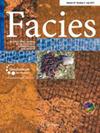南加勒比博内尔岛中新世-上新世生物碎屑斜形岩的优先白云化:岩石学和地球化学分析的启示
IF 1.7
3区 地球科学
Q1 GEOLOGY
引用次数: 0
摘要
本文章由计算机程序翻译,如有差异,请以英文原文为准。
Preferential dolomitization in Mio–Pliocene bioclastic clinoforms, Bonaire Island, South Caribbean: insights from petrographic and geochemical analyses
求助全文
通过发布文献求助,成功后即可免费获取论文全文。
去求助
来源期刊

Facies
地学-地质学
CiteScore
3.70
自引率
5.60%
发文量
15
审稿时长
>12 weeks
期刊介绍:
The journal is open to papers dealing with the interpretation of ancient and modern biotopes and carbonate depositional environments by means of facies analysis in its broadest sense. Once the central part of research in hydrocarbon exploration, facies analysis more and more integrates modern and ancient biogeological processes of a changing earth. Special emphasis is laid on paleobiology and -ecology, basin evolution, sedimentology including diagenesis and geochemistry, as well as studies emphasising the impact of life on earth history. The main part of the target group will be people in academia.
 求助内容:
求助内容: 应助结果提醒方式:
应助结果提醒方式:


